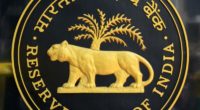India’s Gross Domestic Product (GDP) rose to 20.1% during the first quarter of fiscal FY2022. It is a significant improvement compared to the record fall of 24.4% in the corresponding quarter of the last fiscal year. It depicts the strong resistance shown by the Indian economy to the wrath of the second wave of the pandemic.
The Ministry of Finance released the quarterly GDP data on Tuesday, 31st August 2021. The Ministry also reaffirmed that the data resonate with the government’s prediction of a V-shaped economic recovery a year back. It further stated that the Indian banking system is now well-protected and provisioned to address bad loans.
Recovery has been supported by a quick surge in the inoculation coverage to 24.5% of the total population in Q1 of FY 2021-22 from 4.7% in Q4 of 2020-21. Moreover, exports have increased by 8.7%, while imports have lowered by 5.3% compared to the pre-pandemic levels.
The services sector continues to feel the heat of the pandemic with a slow recovery rate. However, the government is confident that rapid vaccination measures in this sector will aid in the revival of the contact-sensitive sector. Apart from this, the industry space has rebounded by registering a sharp growth of 46%. The manufacturing industry has shown consistent growth. Also, the agriculture and allied industry has posted consistent growth numbers.
The trade, transport and hotel sector managed growth of 34.3% this year versus the 48.1% dip in the last year.
The macroeconomic indicators have also posted positive figures showing solid signs of recovery than during the global financial crisis. The CPI inflation had dropped from 9.1 to 6.2 in 2020-21. Demand, measured by the expenditure on private consumption, grew 19.3% in the last quarter compared to the highest contraction of 26.2% in the previous year. However, government consumption fell by 4.8% when compared to the growth of 12.7% last year.
As a percentage of the GDP, the current account balance recorded a positive number since the 2008-09 global financial crisis. It grew to 0.9% for 2020-21 from -2.3% in 2008-09. Capital Expenditure (CAPEX) as a percentage of the GDP has also increased from 1.6% to 2.2% in 2020-21. Our forex reserves, FDI and FPI, have multiplied over the last ten years.
On the downside, macroeconomic fundamentals such as the External debt as a percentage of the GDP has increased from 20.7% to 21.1%. Furthermore, the fiscal deficit as a percentage of the GDP has risen from 6.1% in 2008-09 to 9.4% in 2020-21.
Despite the pandemic, the Ministry further attributed the faster economic recovery to several structural reforms it has carried out over the years. These have brought about efficiency and productivity across industries and sectors. Additionally, the government’s CAPEX push for allowing private investment has shown positive results. As stated earlier, the financial and banking sector has witnessed persistent clean-ups and reforms to prepare its stakeholders for any financial crisis.
India’s Chief Economic Advisor, Krishnamurthy Subramanian, stated that India would take time until next year for its economic growth to reach the pre-pandemic levels. He further indicated that the government’s big announcements of spendings are yet to be realised in the numbers.
For any clarifications/feedback on the topic, please contact the writer at annapoorna.m@cleartax.in
Annapoorna, popularly known as Anna, is an aspiring Chartered Accountant with a flair for GST. She spends most of her day Singing hymns to the tune of jee-es-tee! Well, not most of her day, just now and then.





